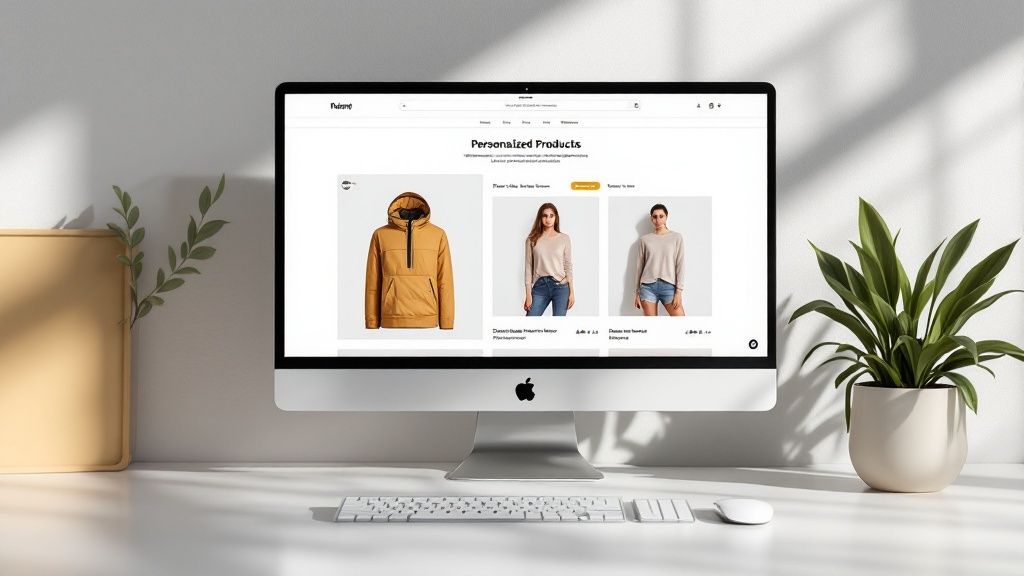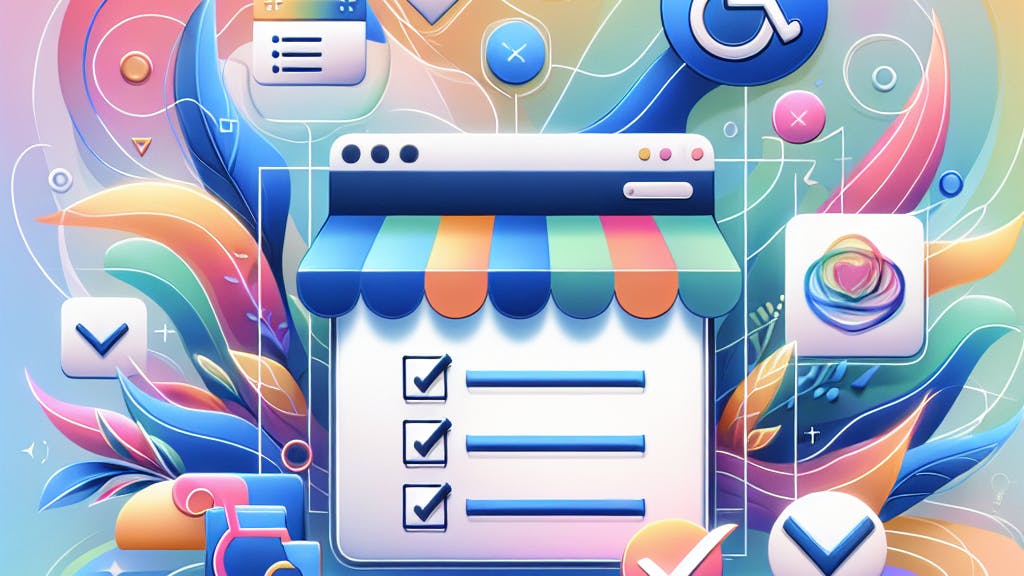Up Sell and Cross Sell: Strategies to Maximize Revenue and Customer Loyalty
November 18, 2024

What are Upselling and Cross-selling?

Upselling and cross-selling are two distinct yet related sales techniques that can significantly increase revenue and improve customer satisfaction. While the terms are often used interchangeably, understanding their differences is key to using them effectively. This article will define each technique, provide clear examples, and explain how they contribute to a stronger sales strategy.
Defining Upselling
Upselling encourages customers to purchase a more expensive version of a product they are already interested in. This could mean choosing a model with more features, a larger size, or a premium package. For instance, a customer looking at a standard blender might be upsold to a professional model with higher horsepower and additional settings. This adds value to the purchase by offering superior performance and a better overall experience. The goal is to demonstrate how the upgraded product better meets their needs and justifies the higher cost. This naturally leads us to the related concept of cross-selling.
Defining Cross-selling
Cross-selling, conversely, involves recommending related or complementary products to a customer's initial purchase. This tactic builds on their existing interest and helps create a more complete solution. Imagine a customer adding a new smartphone to their online shopping cart. Cross-selling opportunities might include a protective case, a screen protector, or wireless headphones. These additions enhance the value of the primary purchase and improve the overall customer experience. This means that cross-selling broadens the purchase with relevant additions, rather than focusing on a single upgraded item. Understanding this difference is crucial for developing effective sales strategies.
Distinguishing Between Upselling and Cross-selling
To solidify the distinction, consider a furniture store. If a customer is looking at a sofa, an upsell would be to suggest a higher-quality model with more durable fabric and a longer warranty. A cross-sell, on the other hand, might be recommending matching throw pillows, a coffee table, or a floor lamp. You might be interested in: Spotting the Difference Between Upselling and Cross-selling. This illustrates how upselling focuses on a single, more expensive item, while cross-selling expands the purchase to include complementary products. Both strategies are valuable for increasing sales, but their effectiveness depends on understanding the customer’s needs and making relevant suggestions. Now, let's explore the business benefits of these techniques.
Benefits for Businesses

Knowing the difference between upselling and cross-selling is just the beginning. The real strength of these strategies lies in the many advantages they offer businesses. These benefits extend far beyond simply increasing the average transaction value; they also help build stronger customer relationships, improve profitability, and drive sustainable growth. This section will examine how well-executed upselling and cross-selling strategies can positively impact a business and cultivate customer loyalty.
Increased Revenue and Profitability
The most direct benefit of upselling and cross-selling is the potential for greater revenue. By encouraging customers to buy more expensive products or add complementary items to their orders, businesses can significantly increase their average order value. For example, a customer initially planning to buy a standard software license might upgrade to a professional version with advanced features through a well-timed upsell. Further, offering related products, like online training or technical support, through cross-selling can further enhance the purchase value. This combined approach directly improves profitability by maximizing revenue from each customer interaction, a vital factor for any business.
Enhanced Customer Lifetime Value
Beyond immediate sales increases, upselling and cross-selling contribute to higher customer lifetime value (CLV). This metric represents the total revenue a business can expect from a single customer throughout their relationship. By consistently offering relevant product suggestions and valuable add-ons, businesses can nurture customer relationships and build loyalty. Satisfied customers are more likely to make repeat purchases and recommend the brand to others. As a result, this translates to higher long-term revenue and a more sustainable business model. With increased CLV, businesses can focus on growth and expansion.
Improved Customer Retention and Loyalty
When implemented correctly, upselling and cross-selling can be powerful tools for improving customer retention. By anticipating customer needs and offering helpful solutions, businesses demonstrate a commitment to their satisfaction. For instance, suggesting a car cover when a customer buys a new car not only increases the sale but also shows that the business cares about protecting their investment. This personalized approach fosters trust and strengthens the customer-business relationship, increasing the likelihood of repeat purchases. Consequently, upselling and cross-selling contribute to lower customer churn and a more stable customer base, paving the way for long-term growth.
Opportunities for Personalized Recommendations
Effective upselling and cross-selling rely heavily on personalized recommendations. Rather than promoting generic add-ons, businesses should tailor suggestions to individual customer preferences and purchase histories. This targeted approach makes upselling and cross-selling feel less like a sales pitch and more like helpful advice. Consider a customer shopping online for gardening supplies. A personalized cross-sell might suggest specific fertilizers or gardening tools based on their previous purchases or browsing history. This personalized approach improves conversion rates by offering relevant and valuable additions to their shopping experience, further solidifying the customer relationship.
Strengthening Customer Relationships
Ultimately, upselling and cross-selling present valuable opportunities to build stronger customer relationships. By offering valuable additions or upgrades that genuinely improve the customer’s experience, businesses show they are committed to providing complete solutions. This reinforces the idea that the business is invested in the customer's success and satisfaction. This proactive approach builds trust and fosters long-term loyalty, creating a mutually beneficial situation for both the business and the customer. These strong relationships become the basis for repeat business and positive word-of-mouth referrals, contributing to sustained growth and a positive brand image.
Effective Techniques and Strategies
Successfully implementing upselling and cross-selling strategies requires more than just understanding their definitions; it necessitates a well-defined approach, using the right techniques at the opportune moment. This section will explore some of the most effective strategies for maximizing the potential of upselling and cross-selling, transforming them from simple sales tactics into powerful tools for revenue growth and customer satisfaction.
Product Knowledge is Paramount
The foundation of effective upselling and cross-selling lies in a deep understanding of your products. This means not only knowing the features and benefits of each individual product but also understanding how they complement one another. For example, if a customer is interested in a particular type of computer, a knowledgeable salesperson can effectively upsell them to a model with a faster processor if they mention needing to run demanding software. Similarly, they could cross-sell a compatible monitor, keyboard, or mouse to enhance their overall computing experience. This product expertise enables targeted recommendations that resonate with the customer’s needs. With this foundation in place, businesses can then focus on the timing of their offers.
Timing is Everything
Knowing when to present an upsell or cross-sell offer is just as important as knowing what to offer. Overwhelming customers with suggestions too early can be off-putting. However, waiting too long might mean missing the opportunity entirely. The optimal moment is often when the customer has shown commitment to a purchase, such as adding an item to their online cart or proceeding to the checkout. This indicates genuine interest and a receptiveness to considering additional items or upgrades. With careful timing, businesses can maximize the impact of their offers.
Focus on Value, Not Just Price
While upselling frequently involves a higher-priced item, the emphasis should always be on the additional value it provides. Simply highlighting a higher price tag will not persuade customers. Instead, clearly explain the additional benefits they gain, such as improved performance, enhanced features, or greater convenience. This allows customers to make informed decisions based on value, making upselling and cross-selling feel more like helpful recommendations than pushy sales tactics. This leads to higher conversion rates and increased customer satisfaction. This leads to our next point, personalization.
Personalization is Key
Generic upselling and cross-selling offers often fail to resonate with customers. Instead, tailor your recommendations to individual customer needs and preferences whenever possible. This personalized approach not only improves the chance of a sale but also creates a stronger connection with the customer. For example, if a customer has previously bought running shoes, suggesting running apparel, a fitness tracker, or energy gels during their next purchase would be a more relevant cross-sell than recommending unrelated products. This demonstrates an understanding of their interests and enhances the overall shopping experience. Building on this, data analysis plays a crucial role.
Utilize Data and Analytics
Leveraging data and analytics can significantly improve the effectiveness of upselling and cross-selling efforts. By tracking customer purchase history, browsing behavior, and other relevant data, you can gain valuable insights into their needs and preferences. This information can then be used to create targeted and personalized offers, improving conversion rates. Analyzing which upsells and cross-sells perform best can also inform future strategies, helping you refine your approach and maximize your return on investment. This data-driven approach allows for constant improvement and adaptation to customer trends.
Create a Sense of Urgency
Introducing a gentle sense of urgency can motivate customers considering an upsell or cross-sell offer. This could involve limited-time discounts, special bundles, or highlighting limited stock availability. This encourages customers to act quickly, but it’s important to avoid excessive pressure, which could deter them. A balanced approach is key to maximizing this technique's effectiveness. In conjunction with these strategies, proper staff training is essential.
Train Your Team
Equipping your sales team with the knowledge and skills to implement upselling and cross-selling effectively is vital. This involves thorough product training, understanding customer psychology, and mastering the art of subtle suggestion. Well-trained staff can identify opportunities, personalize offers, and address customer questions confidently, transforming potential sales pitches into helpful recommendations. Check out our guide on how to master cross-selling on Shopify. This investment in training can significantly impact your bottom line and contribute to greater customer satisfaction. This ongoing training allows your team to adapt to changing market conditions and customer preferences.
Test and Refine
Like any successful marketing strategy, upselling and cross-selling require continuous testing and refinement. Regularly analyze the performance of your offers, track conversion rates, and collect customer feedback to identify what’s working and what needs improvement. This iterative process helps you optimize your approach, further personalize recommendations, and maximize the potential of upselling and cross-selling to boost revenue and improve customer relationships. By constantly adapting your strategies based on data and customer insights, you ensure your efforts remain relevant and effective in a dynamic market. This adaptability is crucial for long-term success.
Customer Psychology

Successfully implementing upselling and cross-selling involves understanding customer psychology. This means going beyond simply presenting offers and delving into the motivations and decision-making processes that influence purchases. By understanding what drives customer behavior, businesses can tailor their upselling and cross-selling methods for maximum effect. This section explores the psychological principles that underpin these techniques.
The Power of Perceived Value
A core principle of customer psychology is perceived value. Customers are more likely to accept an upsell or cross-sell offer if they believe they are receiving a good deal or added value for their money. This perception can be shaped by factors like product quality, the benefits of the upgrade or add-on, and the scarcity of the offer. For example, offering a limited-time discount on a bundled package can enhance perceived value and encourage customers to act quickly. Understanding this principle is crucial for crafting compelling offers.
The Role of Cognitive Biases
Cognitive biases, which are inherent mental shortcuts, also influence customer decisions. One such bias is the "anchoring effect," where customers tend to rely heavily on the first piece of information they receive. In upselling and cross-selling, presenting a higher-priced option first can anchor the customer's perception of value, making a subsequent lower-priced option seem more appealing. The "framing effect," where how information is presented influences choices, also plays a role. Highlighting the benefits of an upgrade, rather than simply focusing on the price difference, can positively sway customer perception. Recognizing these biases can help businesses craft more persuasive offers.
Building Trust and Rapport
Building trust and rapport with customers is essential for successful upselling and cross-selling. Customers are more receptive to recommendations from businesses they trust and feel understand their needs. Building trust requires transparency, clear communication, and a focus on providing genuine value. A salesperson who takes the time to understand a customer’s requirements and offers tailored suggestions will be more successful than one pushing generic upsells. This personalized approach strengthens the customer-business relationship and makes offers feel like genuine recommendations. This foundation of trust is key to long-term customer loyalty.
Leveraging Social Influence
Social influence significantly shapes customer behavior. The principle of "social proof," where people tend to follow the actions of others, can be effectively used in upselling and cross-selling. Displaying testimonials, reviews, or showcasing the popularity of certain upgrades can influence customer decisions through social validation. This reassures customers that others have made similar choices and benefited, increasing their confidence in the recommended products. Highlighting scarcity, such as limited availability or time-sensitive offers, can also create a sense of urgency, prompting faster decisions. Using social influence strategically can be a powerful tool for driving conversions.
Digital Implementation

The digital world provides numerous opportunities for effective upselling and cross-selling. From personalized recommendations on e-commerce sites to targeted email campaigns, businesses can use technology to enhance these techniques and achieve significant results. This section explores how businesses can effectively implement these strategies in the digital landscape, turning online interactions into valuable sales opportunities.
E-commerce Platforms and Personalized Recommendations
E-commerce platforms are ideal for upselling and cross-selling. Using sophisticated algorithms and data analysis, businesses can personalize product recommendations based on individual customer preferences and purchase history. This targeted approach significantly improves the likelihood of conversion. For instance, after a customer adds a camera to their cart, the platform might suggest related accessories like lenses, tripods, or memory cards as cross-sell opportunities. An upsell might be a more advanced camera model with better features. This ensures that suggestions are relevant and appealing.
Targeted Email Campaigns and Promotions
Email marketing remains a valuable tool for digital upselling and cross-selling. Targeted email campaigns enable businesses to send personalized offers based on past purchases or browsing activity. For example, if a customer recently purchased running shoes, a follow-up email could upsell them to a premium insole for added comfort. Alternatively, the email could cross-sell related products like running apparel or fitness trackers. This proactive approach keeps customers engaged and offers valuable additions to their initial purchase. This continuous engagement helps build brand loyalty and encourages repeat purchases.
Utilizing Pop-ups and Website Banners Strategically
While sometimes intrusive, strategically used pop-ups and website banners can be effective upselling and cross-selling tools. Instead of generic offers, tailor these messages to the specific page or product a customer is viewing. For example, a customer browsing laptops might see a pop-up offering a discount on a laptop bag or a wireless mouse as a cross-sell, or suggesting a higher-spec model with a faster processor as an upsell. This contextually relevant approach grabs attention at the right moment and improves conversion potential. This targeted approach minimizes disruption and maximizes relevance.
Leveraging Social Media for Upselling and Cross-selling
Social media provides another channel for implementing these strategies. Through targeted advertising and engaging content, businesses can showcase related products or premium versions to specific customer segments. A company selling fitness equipment, for example, could run social media ads for protein powder or workout apparel as cross-sells to customers who have purchased their home gym equipment. Similarly, they could upsell a premium treadmill model with additional features through engaging video content. This approach maximizes reach and encourages additional purchases within customers' preferred social media environment. This leverages the power of social platforms to connect with customers where they spend their time.
Implementing Tools Like Checkout Links for Shopify
For Shopify users, tools like Checkout Links simplify upselling and cross-selling. These apps create custom shoppable links that lead customers to pre-filled carts with relevant product suggestions. This streamlines buying and makes it easier for customers to accept upsells and cross-sells. By pre-selecting recommended products and applying automatic discounts, Checkout Links simplifies the checkout experience and encourages exploration of additional items. This seamless integration maximizes their impact and increases average order value. This is particularly beneficial for managing diverse customer segments and tailoring offers to specific campaigns, thus enhancing the effectiveness of both initiatives. This targeted approach ensures that upsells and cross-sells are relevant to each customer segment.
Common Mistakes to Avoid
Successfully implementing upselling and cross-selling requires a delicate touch. While the potential rewards are significant, missteps can alienate customers and undermine your efforts. This section examines common pitfalls businesses encounter when implementing these strategies and offers practical solutions to avoid them. By understanding these potential problems, you can refine your approach and maximize your success.
Being Too Pushy
One of the most frequent mistakes is being too aggressive with upselling and cross-selling. Overwhelming customers with irrelevant or excessive suggestions can be detrimental. This creates a negative experience, making customers feel pressured and less receptive to future offers. Instead, offer personalized and relevant suggestions. Offering a compatible case or screen protector when a customer is buying a new phone is helpful. However, pushing a top-of-the-line virtual reality headset might feel forced and irrelevant. Focusing on relevance is key to avoiding a pushy approach.
Irrelevant Recommendations
Offering generic upsells and cross-sells that don’t match customer needs or interests is another common mistake. This shows a lack of understanding of their purchase intent and can lead to frustration. Focus instead on creating tailored recommendations based on individual customer profiles, purchase history, and browsing behavior. This personalized approach ensures that the products offered are genuinely useful and valuable, increasing the chances of conversion and demonstrating a genuine understanding of their needs. Relevance is key to building trust and fostering positive customer relationships.
Poor Timing
The timing of your offers is crucial. Presenting suggestions too early can feel intrusive, while waiting too long can mean missing the opportunity. Interrupting customers while they are still browsing can be disruptive. Conversely, waiting until after the purchase is complete may be too late. The best timing is often during checkout, after an item has been added to the cart. This signals purchase intent and openness to considering related items or upgrades. Choosing the right moment is key to maximizing the effectiveness of your offers.
Ignoring Value Proposition
Focusing solely on price differences, rather than the added value of the upsell or cross-sell, is a crucial mistake. Simply stating that a product is more expensive isn't persuasive. Instead, clearly explain the benefits customers receive, like better features, improved quality, or increased convenience. This allows customers to make informed decisions based on value. For instance, when upselling a customer to a premium laptop, highlight the benefits of its faster processor and larger hard drive, emphasizing the improved performance and greater storage capacity they will enjoy. This value-driven approach makes upselling and cross-selling feel like helpful recommendations rather than sales tactics.
Lack of Transparency
Finally, a lack of transparency regarding pricing, features, or compatibility can erode trust and discourage conversions. Hidden fees, vague product descriptions, or misleading information can lead to frustration and negative reviews. Be upfront about any extra costs, clearly explain the benefits of each product, and ensure compatibility between recommended items. This transparent approach builds confidence and fosters long-term loyalty. Transparency is essential for building strong customer relationships and a positive brand image.
Boost your Shopify store's average order value and customer satisfaction by avoiding these common upselling and cross-selling pitfalls. Checkout Links offers a seamless solution for implementing effective and personalized strategies. Start your free trial today and see the difference! Try Checkout Links now!
 Checkout Links
Checkout Links



